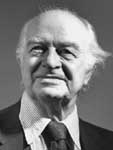Chapter 1 Chinese version preface
Honorary Chairman of China Association for Science and Technology
Lu Jiaxi, Vice Chairman of the National Committee of the Chinese People's Political Consultative Conference
Senior Academician of Chinese Academy of Sciences
The Chinese version of Pauling, authorized by Simon & Schuster Publishing Company, will soon be published by Fudan University Press, which will definitely be welcomed by Chinese readers, especially young students.
I graduated from the Department of Chemistry of Xiamen University in 1934, and went to study in the University of London in 1937, mainly engaged in the research of isotope separation and isotope exchange reaction kinetics. In 1939, I received a Ph.D.In the same year, I applied to go to the California Institute of Technology, and followed Dr. Pauling in the research of structural chemistry until I returned to China after the victory of the Anti-Fascist War in 1945.
At that time, Dr. Pauling was already an internationally renowned theoretical chemist.He was born in 1901 and received a doctorate in chemistry from Caltech in 1925. Then he went to Europe to study quantum mechanics with physicists such as Sommerfeld, Born, and Heisenberg. Schrödinger, Dirac and others had extensive contacts and exchanges. After returning to the United States in 1927, he engaged in research on the nature of chemical bonds, which earned him the Nobel Prize in Chemistry in 1954 alone.As early as 1931, he won the first Langmuir Prize in Chemistry for this research work, and became the youngest full professor at Caltech in the same year. In 1933 he became the youngest member of the American Academy of Sciences since its founding (1866).At that time, Caltech was already a well-known academic center of structural chemistry in the world and an academic sanctuary that young chemists yearn for. This is also the main reason why I studied under Pauling.
In the fall of 1939, I traveled from London to Pasadena, California, to enter the newly built Clarein Laboratory.At that time, under the auspices of Pauling, the research direction of the laboratory was mainly divided into two aspects: one was to conduct research on the fine structure of proteins with the support of the Rockefeller Foundation; the other was to carry out research for the service of World War II. Research on rocket boosters and explosives.The specific person in charge of the laboratory is Dr. Corey, but Pauling personally participated in many major academic issues. At that time, all explosives obtained by the Navy from Germany and Japan were brought to our laboratory for spectral composition analysis, and at the same time researched new Rocket boosters and explosives.I also participated in the structural chemistry research of proteins. At that time, Pauling was particularly interested in the three-dimensional bonding theory of carbon atoms, which is also the key to the fine structure of proteins.
Dr. Pauling was known as a "science prodigy" when he was an undergraduate student at Oregon Agricultural College. He was erudite and talented, and made outstanding contributions in the fields of chemistry, physics, immunology, and medicine.He is also a political activist with strong insight. He sympathizes with the plight of weak and poor countries and the poor, and hates the arms race in the US Congress. , issued a declaration to stop nuclear tests, and organized a series of related activities.For this reason, relevant U.S. authorities have withheld his passport, frozen his scientific research funds, and deprived him of his scientific research rights.There are also a few people in the academic circle who ridiculed his theoretical research on vitamin C, but the facts proved that he was right to call for world peace and national equality. Therefore, in 1962, he won the Nobel Peace Prize alone.So far, he is the only one who has won the Nobel Prize twice.
Pauling was very friendly to the Chinese people. Shortly after the thaw in Sino-US relations in 1973, he and his wife visited China, traveling all over cities and villages.He has always treasured the handicrafts given to him by Chinese farmers. In the summer of 1981, he visited China again with his wife who was seriously ill.After arriving in Beijing, due to the deterioration of his wife's health, he had to change his itinerary and return to China early. He regretted this for the rest of his life.
Readers can see the creative spirit and sense of social responsibility of contemporary scientists from this biography.Pauling's life is worthy of being a model for scientists.This book reflects Pauling's growth path, academic experience, and academic achievements from multiple aspects, from which we can get a glimpse of the development of society, education, and scientific research in the 20th century, and review the shadows left by the two world wars on international relations. In-depth thinking about the future society.In this sense, this biography is a mirror of the dying 20th century, reflecting the social changes of this century.The pros and cons of human progress and high technology, and the outstanding contributions and responsibilities of scientists.Pauling's personality strength will give us infinite enlightenment.
The publication of the Chinese version of this book can also be regarded as our commemoration of this great scientific giant.
November 1998

